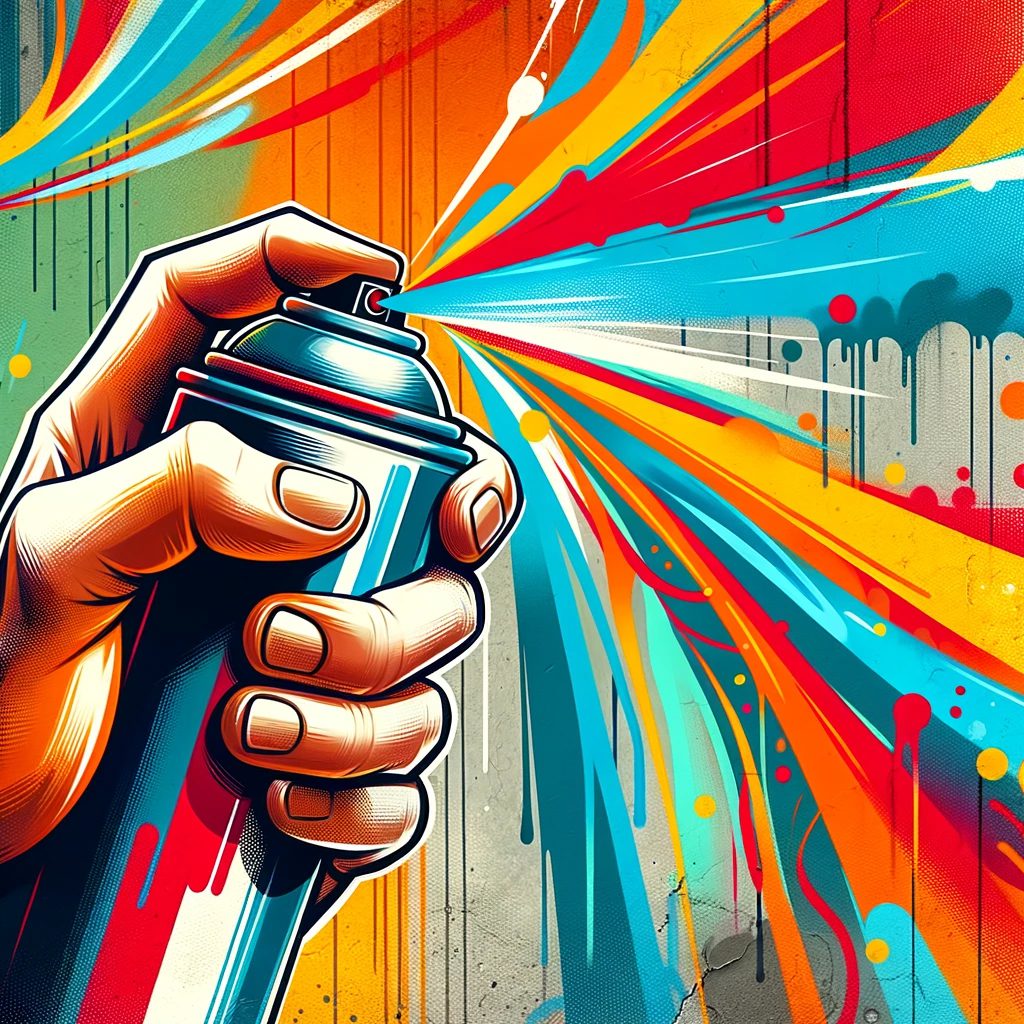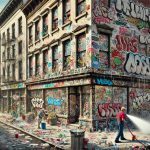
Graffiti-covered walls are a common sight in many bustling cities. You’ve probably seen them yourself, vibrant and chaotic, breathing life into otherwise drab urban landscapes. But is this street art a sign of urban decay or a unique form of urban expression? In this article, we’ll delve into the history of graffiti, its perception as vandalism, its role as an art form, and the complex middle ground it occupies in our cities.
Historical Background of Graffiti
Graffiti’s roots trace back to ancient civilizations, with inscriptions found on walls in ancient Egypt and Rome. These early forms of graffiti were often political or humorous messages, providing insights into daily life and societal issues. Fast forward to the 1970s in New York City, and graffiti evolved into a bold form of self-expression. Artists like Jean-Michel Basquiat and Banksy became icons, transforming graffiti into a respected art movement.
The rise of modern graffiti coincided with the hip-hop culture of the 1970s and 80s. Trains, walls, and buildings in New York became canvases for young artists seeking to make their mark. Despite its illegal nature, graffiti quickly spread to other major cities worldwide. Today, it is both celebrated in galleries and condemned on city streets.
Influential figures in the graffiti world have helped elevate the medium to an art form. Jean-Michel Basquiat began as a street artist before gaining fame in the high art world. Banksy, with his provocative and often political pieces, has brought widespread attention and debate to graffiti. These artists highlight graffiti’s potential for profound cultural impact.
Graffiti as Urban Decay
Many view graffiti as a form of vandalism, a destructive act that defaces public and private property. This perception is rooted in the association of graffiti with gang activity and delinquency. Studies have shown that graffiti can negatively impact property values, discouraging investment in affected areas. The presence of graffiti is often seen as a sign of neglect and disorder.
Public safety concerns also play a significant role in the negative perception of graffiti. Areas with high levels of graffiti are sometimes linked with increased crime rates. This correlation fuels efforts to remove graffiti and prevent its occurrence. Cities invest heavily in graffiti removal programs, often spending millions annually.
Government and community responses to graffiti vary widely. Some cities adopt strict measures, including heavy fines and imprisonment for graffiti offenders. Others focus on prevention through education and youth programs. Despite these efforts, graffiti persists, highlighting the challenges of completely eradicating it.
Anti-graffiti initiatives often include rapid removal to discourage further vandalism. Programs like “zero tolerance” policies aim to keep public spaces clean and graffiti-free. Yet, these measures can also stifle artistic expression. The debate continues on whether these approaches are effective or counterproductive.
Graffiti as Urban Expression
On the flip side, many argue that graffiti is a legitimate and valuable art form. Graffiti brings color and vibrancy to urban spaces, transforming blank walls into canvases for creativity. Famous graffiti artworks have garnered significant attention and praise from the art world. This recognition underscores the artistic value that graffiti can offer.
Graffiti also serves as a powerful means of cultural expression, especially for marginalized communities. It provides a voice to the voiceless, allowing artists to communicate their struggles and aspirations. This form of expression can foster a sense of identity and community among those who feel excluded from mainstream society. In this way, graffiti can be both personal and political.
Cities like Berlin and Melbourne have embraced graffiti, integrating it into their cultural fabric. In these cities, graffiti has become a tourist attraction, drawing visitors eager to see renowned street art. This shift demonstrates the potential for graffiti to boost local economies. Instead of battling graffiti, these cities celebrate it as part of their urban identity.
Legal graffiti spaces have emerged as a solution to the conflict between creativity and vandalism. These designated areas allow artists to work freely without fear of legal repercussions. Such initiatives encourage artistic development and provide opportunities for public engagement with street art. By offering a compromise, legal graffiti spaces promote both order and creativity.
The Middle Ground: Graffiti in the Gray Zone
The line between legal and illegal graffiti is often blurred. Some cities have found ways to balance control and creativity, allowing graffiti in designated areas while strictly policing others. This approach recognizes the artistic value of graffiti while addressing concerns about vandalism. It represents a middle ground where urban expression can flourish without descending into chaos.
Case studies of cities with successful graffiti management highlight the benefits of this balanced approach. For instance, Bristol in the UK has created legal graffiti zones while maintaining strict policies elsewhere. This strategy has reduced illegal graffiti while fostering a vibrant street art scene. It shows that a balanced approach can satisfy both art advocates and city officials.
Community involvement is crucial in finding a balance between expression and order. By engaging local residents in decision-making processes, cities can better address the needs and concerns of their populations. Public art projects and festivals can help integrate graffiti into the urban environment. These initiatives demonstrate how graffiti can be a positive force in city life.
Interviews and Expert Opinions
Artists provide invaluable insights into the motivations behind graffiti. Many see it as a way to reclaim public space and express individuality. One graffiti artist, who wished to remain anonymous, described it as a “visual dialogue with the city.” This perspective highlights the personal and social dimensions of graffiti.
Urban planners and sociologists offer a different viewpoint on the impact of graffiti. They emphasize the need for context when assessing graffiti’s role in urban environments. Some argue that controlled graffiti can enhance public spaces, while uncontrolled graffiti may signal neglect. These experts suggest that nuanced policies are essential for managing graffiti effectively.
Law enforcement officials often focus on the legal and safety aspects of graffiti. They stress the importance of maintaining public order and preventing vandalism. However, some officers acknowledge the artistic talent involved in graffiti. This dual perspective underscores the complexity of the graffiti issue.
Balancing these various viewpoints can be challenging but necessary. By considering the perspectives of artists, urban planners, and law enforcement, cities can develop more comprehensive strategies. These strategies can help manage graffiti in a way that respects both artistic expression and public order. The goal is to create urban spaces that are vibrant and well-maintained.
Personal Anecdotes and Stories
Individual stories of graffiti artists reveal their passion and dedication. For example, one artist shared how graffiti helped them cope with personal struggles. This therapeutic aspect of graffiti is often overlooked in public debates. It shows how graffiti can be a positive outlet for creativity and emotion.
Local residents also have diverse reactions to graffiti in their neighborhoods. Some appreciate the art and its ability to enliven their surroundings. Others feel frustrated by what they see as defacement of property. These mixed feelings highlight the subjective nature of graffiti’s impact.
Community projects can bridge the gap between different perspectives. In some areas, residents collaborate with artists to create murals that reflect local culture and history. These projects foster a sense of ownership and pride in the neighborhood. They demonstrate how graffiti can bring people together.
Stories of transformation also abound in the graffiti world. Artists who started with illegal graffiti have gone on to successful careers in art and design. These success stories show the potential for graffiti to serve as a stepping stone. They inspire others to pursue their creative passions.
Conclusion
Graffiti is a multifaceted phenomenon that can be seen as both urban decay and urban expression. It depends largely on context, perspective, and implementation. While it can signal neglect and disorder, it also has the power to transform and revitalize urban spaces. The key is finding a balance that allows for creative expression while maintaining public order.
Cities around the world are experimenting with different approaches to manage graffiti. Some have found success in creating legal graffiti zones and supporting public art projects. These initiatives highlight the potential for graffiti to contribute positively to urban environments. They offer a model for other cities grappling with the graffiti issue.
Ultimately, graffiti is a reflection of the diverse and dynamic nature of urban life. It challenges us to think about who has the right to the city and how public spaces should be used. By considering multiple viewpoints and fostering dialogue, we can better understand and appreciate the complexities of graffiti. This approach can lead to more inclusive and vibrant urban communities.



